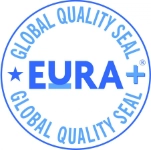For companies sending employees on international assignments, understanding and managing travel risks is a crucial component of duty of care. Business travel exposes employees to a range of potential threats, from geopolitical instability to health hazards and natural disasters.
To ensure employee safety and business continuity, organizations must conduct thorough travel risk assessments and utilize tools like travel safety maps to make informed decisions.
Learn more about our risk assessment services for assignments abroad.
How do you conduct a travel risk assessment?
A travel risk assessment is a structured process that helps businesses evaluate and mitigate potential dangers associated with employee travel. This assessment typically involves:
- Destination Risk Analysis
- Reviewing country risk maps to assess the overall safety of the destination.
- Checking government-issued travel advisories and reports from organizations like the World Health Organization (WHO) or the Centers for Disease Control and Prevention (CDC).
- Identifying historical trends related to crime, political stability, and health risks.
- Traveler Risk Profile
- Considering the traveler’s personal health, previous travel experience, and vulnerability to local risks.
- Identifying whether specific vaccines, medications, or protective measures are required.
- Mitigation Strategies
- Implementing travel risk management policies, such as securing travel insurance, emergency response plans, and local support contacts.
- Providing security training, crisis management resources, and communication tools to employees.
- Real-Time Monitoring
- Keeping track of evolving risks through news sources, security intelligence platforms, and risk maps.
- Ensuring employees have access to emergency assistance services throughout their trip.
What is a basic risk map, and what is its objective?
As mentioned before, travel safety maps are a crucial part of travel risk assessment. But what exactly are risk maps?
A risk map is a visual representation of potential threats in a given region, helping organizations understand and compare the level of risk across different destinations. These maps typically categorize risks using color-coded indicators (e.g., green for low risk, red for high risk) and may focus on specific risk factors such as political stability, crime, health hazards, or infrastructure reliability.
Take a look at an example of travel safety map, as featured in our software Atlasposting.
The objective of risk mapping is to provide businesses with a clear, data-driven approach to assessing travel risks. By integrating risk maps into their travel policies, organizations can make informed decisions about sending employees abroad, adjusting travel itineraries, and implementing necessary safety precautions.
Why is a travel safety map important?
For companies managing international assignments, risk maps play a vital role in travel safety and corporate responsibility.
Travel safety maps enable businesses to:
- Identify high-risk areas – Businesses can proactively adjust their travel policies and determine whether travel is necessary or if alternative arrangements should be made.
- Enhance risk mitigation efforts – By understanding specific risks in each location, companies can tailor security protocols, health precautions, and emergency response plans.
- Ensure duty of care compliance – Employers have a legal and ethical responsibility to safeguard employees. A well-structured travel risk management strategy, backed by risk mapping, ensures compliance with duty of care obligations.
- Support crisis management – In the event of an emergency, risk maps help businesses coordinate rapid responses, including evacuations, security reinforcements, and medical assistance.
How do you determine country risk?
The concept of country risk is associated with that of travel risk. It refers to any potential danger that could impact an employee’s health, safety, or productivity while traveling for business. These risks can stem from various factors, including:
- Health Risks:
- Exposure to infectious diseases, poor sanitation, or limited medical care.
- High-risk regions may require specific vaccinations or malaria prophylaxis.
- Lack of access to emergency healthcare services.
- Security Risks:
- Threats such as political unrest, terrorism, or civil disturbances.
- High crime rates, including theft, fraud, or violent crime.
- Potential targeting of foreign business travelers.
- Environmental Risks:
- Earthquakes, hurricanes, or flooding that could disrupt travel plans.
- Extreme weather conditions, such as heatwaves or monsoons, impacting mobility.
- Operational Risks:
- Unreliable transportation networks, leading to delays or missed appointments.
- Poor infrastructure affecting work efficiency and employee safety.
- Legal and regulatory challenges, including visa issues or compliance concerns.
For businesses, failing to address these risks can lead to severe consequences, including financial losses, reputational damage, legal liability, and—most importantly—harm to employees. Moreover, by identifying and preparing for these risks, businesses ensure that employees remain safe and productive throughout their assignments.
Learn more about corporate responsibility in case of foreign assignment.
Which country has the highest risk?
For companies planning international travel for their employees, it is critical to be aware of countries where travel is discouraged in 2025.
According to the most recent assessments, several nations pose high risks due to armed conflict, political instability or high crime rates.
These include Sudan, Lebanon, Myanmar, South Africa, Mexico, and Kenya, which have experienced increased risk due to intensified conflict or increased crime, as shown by the risk maps.
Studio A&P’s support
Because risk levels vary from country to country and conditions can change rapidly, it is critical for companies to remain constantly updated to ensure the safety of their traveling employees.
Studio A&P’s Risk Assessment team offers specialized support in analyzing travel risks, verifying security conditions in destination countries and providing detailed, up-to-date briefings prior to each corporate mission.
Our risk maps, based on data from six authoritative government sources – including the Ministère de l’Europe et des Affaires étrangères (FR), the U.S. Department of State (U.S.), and the Foreign, Commonwealth & Development Office (UK) – enable an immediate assessment of a destination’s level of danger. Each country is classified using a four-color system (green, yellow, orange and red), enabling companies to make informed decisions and reduce risks to their employees.



















